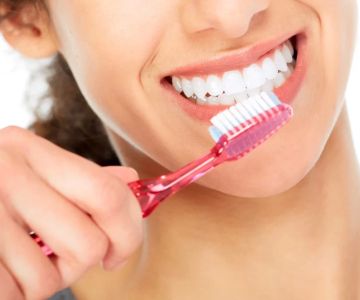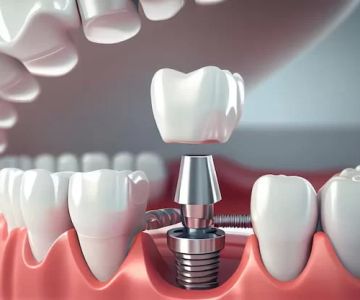What to Expect During a Dental Cleaning: A Complete Guide
- 1. Overview of Dental Cleaning
- 2. Why Regular Dental Cleanings Are Essential
- 3. Step-by-Step Process of a Dental Cleaning
- 4. Common Concerns During Dental Cleanings
- 5. Real-Life Experiences: Dental Cleanings from Patients
- 6. After-Care Tips Following a Dental Cleaning
- 7. How to Book Your Next Dental Cleaning
1. Overview of Dental Cleaning
Dental cleaning, also known as prophylaxis, is a routine procedure conducted by dental professionals to maintain optimal oral health. While regular brushing and flossing are important, a professional cleaning removes plaque and tartar buildup that regular oral hygiene can miss. These cleanings are essential for preventing dental diseases such as cavities and gum disease.
During a dental cleaning, a hygienist or dentist removes plaque and tartar from your teeth and below the gum line. The procedure also helps polish the teeth, leaving them smooth and free from surface stains. In this article, we’ll explain exactly what to expect during a dental cleaning, its importance, and how to prepare for it.
2. Why Regular Dental Cleanings Are Essential
While brushing and flossing are key components of dental hygiene, they can’t reach all areas of the teeth and gums. Plaque is a sticky film of bacteria that naturally forms on teeth, but when it hardens into tartar, only a professional cleaning can remove it. Here are a few reasons why regular dental cleanings are crucial for your oral health:
- Prevention of Gum Disease: Regular cleanings help prevent gum disease (gingivitis and periodontitis) by removing plaque and tartar that can cause inflammation and infection of the gums.
- Prevention of Cavities: By keeping your teeth free of plaque, dental cleanings help prevent the formation of cavities, which can lead to more complex dental treatments if left untreated.
- Early Detection of Dental Issues: Dental professionals can identify early signs of oral health issues, such as tooth decay, gum disease, or oral cancer, and treat them before they become serious problems.
- Better Breath: Dental cleanings help remove food particles and bacteria that can cause bad breath, leaving your mouth feeling fresh and clean.
Regular cleanings not only maintain the appearance and health of your teeth but also contribute to your overall health by preventing more severe conditions that could affect your well-being.
3. Step-by-Step Process of a Dental Cleaning
Understanding the dental cleaning process can ease any anxiety and help you prepare for your next visit. Here’s what typically happens during a standard cleaning:
- Initial Assessment: The hygienist or dentist will begin by examining your teeth and gums. They may ask about your oral hygiene habits, and discuss any concerns or changes in your health.
- X-Rays (if necessary): If it’s been a while since your last visit, or if the dentist suspects an issue, they may take X-rays to check for cavities, bone loss, or other underlying issues.
- Scaling: The hygienist will use specialized instruments to remove plaque and tartar from the surfaces of your teeth and beneath the gum line. This part of the cleaning is essential for preventing gum disease.
- Polishing: After scaling, your teeth will be polished to remove any remaining plaque and surface stains. A special paste and a spinning tool are used to smooth the teeth and leave them shiny.
- Flossing: The hygienist will floss your teeth to remove any remaining debris and ensure that no plaque is left in between your teeth.
- Fluoride Treatment: As the final step, a fluoride treatment is applied to help protect your teeth from cavities and strengthen your enamel. This may be a gel or foam that’s placed on your teeth for a few minutes.
The procedure is generally quick and non-invasive, and it’s a great way to maintain your oral health in the long term.
4. Common Concerns During Dental Cleanings
Many people experience some level of anxiety or fear when it comes to dental cleanings. Here are a few common concerns, along with tips to ease your mind:
- Discomfort or Sensitivity: Some people may feel discomfort or slight sensitivity during the cleaning process, particularly if they have sensitive gums or teeth. However, this is usually temporary and can be managed with the use of a desensitizing toothpaste or numbing gels.
- Noise of the Tools: The sound of dental tools can be unsettling for some people. If this concerns you, let your hygienist know. They can offer tips on relaxation and ways to reduce discomfort.
- Bleeding Gums: It’s common for gums to bleed slightly, especially if you haven’t had a cleaning in a while. This is typically a sign of gum irritation, but if it continues after your cleaning, be sure to discuss it with your dentist.
Remember, dental cleanings are essential for your long-term oral health. Any discomfort is usually short-lived, and the benefits far outweigh any temporary discomfort you may feel.
5. Real-Life Experiences: Dental Cleanings from Patients
Hearing real-life experiences can help demystify the dental cleaning process. Here are a few examples from patients who’ve undergone cleanings:
- Maria’s Experience: Maria, a busy professional, had always been nervous about dental visits. After her first cleaning in years, she was pleasantly surprised by how painless the process was. She felt more confident in her smile and made sure to schedule regular cleanings going forward.
- John’s Story: John had neglected his oral hygiene for several months and was concerned about gum disease. After his cleaning, his hygienist recommended a deeper cleaning to address some early gum issues. John now regularly visits his dentist, and his gum health has improved significantly.
These stories highlight how regular dental cleanings can lead to better oral health and overall well-being. Everyone has different experiences, but the positive impact of professional cleaning is undeniable.
6. After-Care Tips Following a Dental Cleaning
After your dental cleaning, it’s important to follow a few simple after-care tips to maintain your oral health:
- Brush and Floss Gently: Continue your regular oral care routine, but be gentle on your gums for the next day or so. Use a soft-bristled toothbrush and be cautious when flossing if your gums were sensitive.
- Watch Your Diet: Avoid hard or sticky foods immediately after your cleaning. This will help prevent any discomfort and ensure your teeth remain clean and healthy.
- Hydrate: Drinking water can help flush out any remaining debris and keep your mouth hydrated.
By taking care of your teeth after a cleaning, you can help ensure long-lasting results and continue to enjoy a healthy smile.
7. How to Book Your Next Dental Cleaning
If it’s time for your regular dental cleaning, book an appointment with a trusted dentist or hygienist. At Dentistry Toothtruth, we offer professional and gentle dental cleanings to keep your oral health in top shape. Regular cleanings can prevent serious dental problems and ensure your smile remains beautiful and healthy.
Visit Dentistry Toothtruth to schedule your next appointment and start taking care of your smile today!







 Summit Dental Care4.0 (124 review)
Summit Dental Care4.0 (124 review) Fair Oaks Orthodontics5.0 (29 review)
Fair Oaks Orthodontics5.0 (29 review) Dental Care of North Fort Myers4.0 (708 review)
Dental Care of North Fort Myers4.0 (708 review) Sarkissian Dentistry: Robert Sarkissian, DDS, MAGD5.0 (84 review)
Sarkissian Dentistry: Robert Sarkissian, DDS, MAGD5.0 (84 review) Root 66 Endodontics4.0 (16 review)
Root 66 Endodontics4.0 (16 review) Scott Soderquist, DDS, MS0.0 (0 review)
Scott Soderquist, DDS, MS0.0 (0 review) The Importance of Oral Health Education During Pregnancy for a Healthy Pregnancy
The Importance of Oral Health Education During Pregnancy for a Healthy Pregnancy Best Tips for Brushing Your Teeth Properly for Healthy Gums: Essential Techniques for Oral Health
Best Tips for Brushing Your Teeth Properly for Healthy Gums: Essential Techniques for Oral Health Why Skipping Dental Checkups Can Lead to Bigger Oral Health Problems
Why Skipping Dental Checkups Can Lead to Bigger Oral Health Problems Advantages of Porcelain Dental Restorations
Advantages of Porcelain Dental Restorations How Can Diabetes Cause Tooth and Gum Problems? Preventing and Managing Oral Health Issues
How Can Diabetes Cause Tooth and Gum Problems? Preventing and Managing Oral Health Issues Healthy Habits for Promoting Good Oral Health and Hygiene: Tips for a Healthy Smile
Healthy Habits for Promoting Good Oral Health and Hygiene: Tips for a Healthy Smile